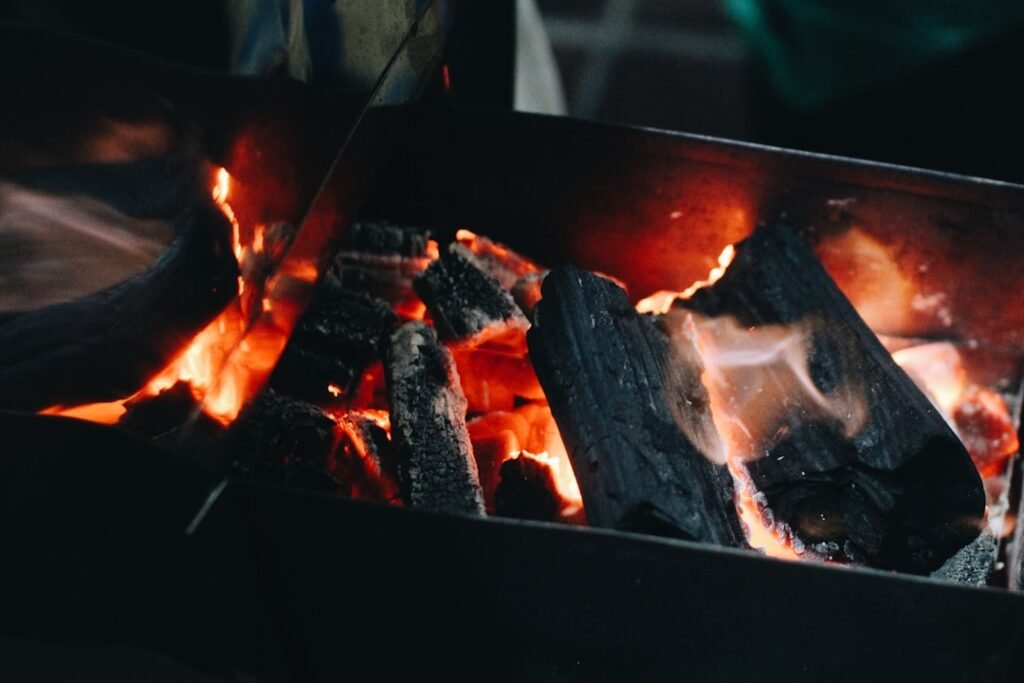Mastering the Art of Grills: A Beginner’s Guide

Grilling is more than just a cooking method; it’s an experience that brings people together. At its core, grilling involves cooking food over an open flame or heat source, which imparts a unique flavor and texture that is hard to replicate with other cooking techniques. The high heat of the grill caramelizes the natural sugars in food, creating that coveted char and smoky flavor that many of us crave.
Whether I’m grilling burgers, vegetables, or seafood, I find that the process itself is as enjoyable as the delicious results. The beauty of grilling lies in its versatility. I can choose from a variety of fuels, including charcoal, gas, and even wood, each offering distinct flavors and cooking experiences.
Charcoal grilling, for instance, provides a rich, smoky taste that many enthusiasts swear by, while gas grilling offers convenience and precise temperature control. Understanding these basics allows me to appreciate the nuances of grilling and helps me make informed choices about how I want to prepare my meals. As I delve deeper into the world of grilling, I discover that mastering this culinary art requires not just knowledge but also practice and experimentation.
Choosing the Right Grill for You
Selecting the right grill is a crucial step in my grilling journey. With so many options available, I often find myself weighing the pros and cons of each type. Charcoal grills are often favored for their ability to produce that authentic smoky flavor, but they require more time and effort to set up and maintain.
On the other hand, gas grills offer convenience and ease of use, allowing me to ignite the flames with the push of a button. I’ve learned that my choice ultimately depends on my cooking style and how much time I’m willing to invest in the grilling process. When considering my options, I also take into account the size and portability of the grill.
If I plan to host large gatherings, a larger grill with multiple burners might be ideal. Conversely, if I’m looking for something compact for tailgating or camping trips, a portable grill would suit my needs better. Additionally, I pay attention to features such as temperature gauges, side burners, and storage space.
Each of these elements contributes to my overall grilling experience, making it essential for me to choose a grill that aligns with my preferences and lifestyle.
Essential Tools and Accessories for Grilling

Equipping myself with the right tools and accessories can significantly enhance my grilling experience. A good set of grilling utensils is essential; I always keep a sturdy spatula, tongs, and a basting brush on hand. These tools not only make it easier for me to flip and serve food but also help me maintain safety while working over an open flame.
Investing in high-quality materials ensures that these tools will withstand the heat and wear of regular use. In addition to utensils, I find that having a reliable meat thermometer is invaluable. It allows me to check the internal temperature of meats accurately, ensuring that they are cooked to perfection without overdoing them.
Furthermore, I’ve discovered that grill mats can be a game-changer for cooking delicate items like fish or vegetables that might otherwise fall through the grates. With these essential tools at my disposal, I feel more confident in my ability to create delicious grilled dishes while minimizing stress and mess.
Mastering the Art of Charcoal Grilling
| Technique | Temperature | Time |
|---|---|---|
| Direct Grilling | High heat (450-550°F) | Short (8-12 minutes) |
| Indirect Grilling | Medium heat (350-450°F) | Medium (25-45 minutes) |
| Smoking | Low heat (225-275°F) | Long (1-6 hours) |
Charcoal grilling is an art form that requires patience and practice. The first step in my charcoal grilling journey is selecting the right charcoal—lump charcoal burns hotter and faster, while briquettes provide a more consistent heat over a longer period. Once I’ve chosen my fuel, I light the charcoal using a chimney starter or lighter fluid, allowing it to reach an even ash-gray color before spreading it across the grill.
This initial setup is crucial for achieving optimal cooking temperatures. As I grill over charcoal, I pay close attention to heat zones. By arranging the coals in a two-zone setup—one side for direct heat and the other for indirect heat—I can control how my food cooks.
This technique allows me to sear meats over high heat while moving them to the cooler side to finish cooking without burning. Additionally, I often experiment with adding wood chips to the coals for an extra layer of flavor. The combination of smoke and high heat creates mouthwatering results that keep me coming back for more.
Perfecting Gas Grilling Techniques
Gas grilling offers a different set of techniques that I’ve come to appreciate for their convenience and efficiency. One of the first things I learned was how to preheat my gas grill properly; this step is essential for achieving those beautiful grill marks and ensuring even cooking. By allowing the grill to reach the desired temperature before placing food on it, I can create a perfect sear while locking in moisture.
Another technique I’ve mastered is using indirect heat on a gas grill. By turning on only one side of the burners, I can create a hot zone for searing and a cooler zone for slow cooking or keeping food warm. This method is particularly useful for larger cuts of meat that require longer cooking times.
Additionally, I’ve found that using a grill basket or skewers can help me manage smaller items like vegetables or shrimp, preventing them from falling through the grates while still allowing them to absorb that delicious grilled flavor.
Tips for Grilling Different Types of Meat

Grilling different types of meat requires an understanding of their unique characteristics and ideal cooking methods. For instance, when grilling steaks, I always choose cuts with good marbling, such as ribeye or sirloin, as they tend to remain juicy and flavorful when cooked over high heat. I also make sure to let the meat rest at room temperature before grilling; this helps it cook more evenly.
When it comes to chicken, I’ve learned that brining can make a significant difference in moisture retention. A simple brine solution of water, salt, and sugar can enhance flavor and juiciness. For pork chops or ribs, marinating overnight allows flavors to penetrate deeply into the meat.
Each type of meat has its own ideal cooking time and temperature; therefore, using a meat thermometer becomes indispensable in ensuring that everything is cooked safely while still being tender and juicy.
Exploring Vegetarian Grilling Options
Grilling isn’t just for meat lovers; there’s a whole world of vegetarian options that can be just as satisfying. One of my favorite things to grill is vegetables—zucchini, bell peppers, and asparagus take on a delightful char when cooked over an open flame. To enhance their natural flavors, I often marinate them in olive oil, balsamic vinegar, and herbs before grilling.
I’ve also discovered that plant-based proteins like tofu and tempeh can be delicious when grilled properly. By pressing tofu to remove excess moisture and marinating it beforehand, I can achieve a satisfying texture that absorbs flavors beautifully. Additionally, grilling fruits like peaches or pineapples adds a sweet caramelization that makes for an excellent dessert option or topping for salads.
Exploring these vegetarian options has expanded my grilling repertoire and allowed me to cater to diverse dietary preferences.
Safety Tips for Grilling Success
Safety should always be a priority when grilling; after all, working with fire comes with inherent risks. One of the first rules I follow is to keep my grill clean and well-maintained. Regularly removing grease buildup not only prevents flare-ups but also reduces the risk of fire hazards.
Additionally, I always ensure that my grill is placed on a stable surface away from flammable materials like wooden decks or overhanging branches. I also make it a point to have a fire extinguisher nearby just in case things get out of hand. Wearing appropriate clothing—such as long sleeves and closed-toe shoes—helps protect me from burns or accidents while grilling.
Lastly, letting food rest after cooking is not just about flavor; it also allows juices to redistribute within the meat, making it safer to handle when serving. By following these safety tips, I can enjoy my grilling experience with peace of mind while creating delicious meals for family and friends.






